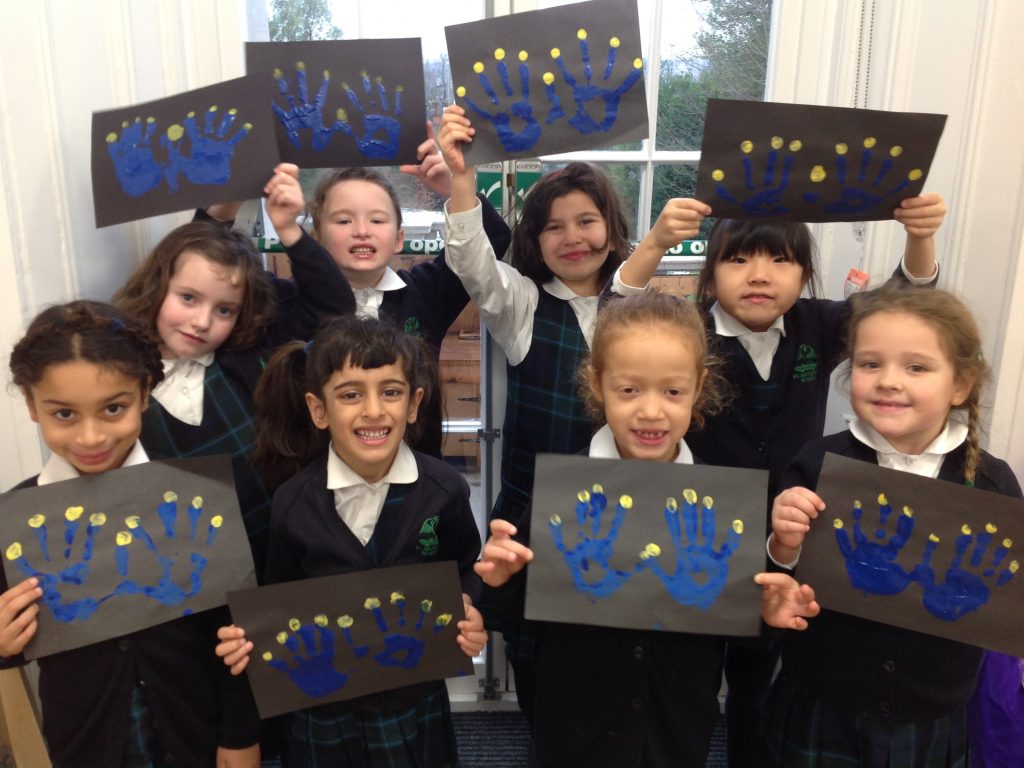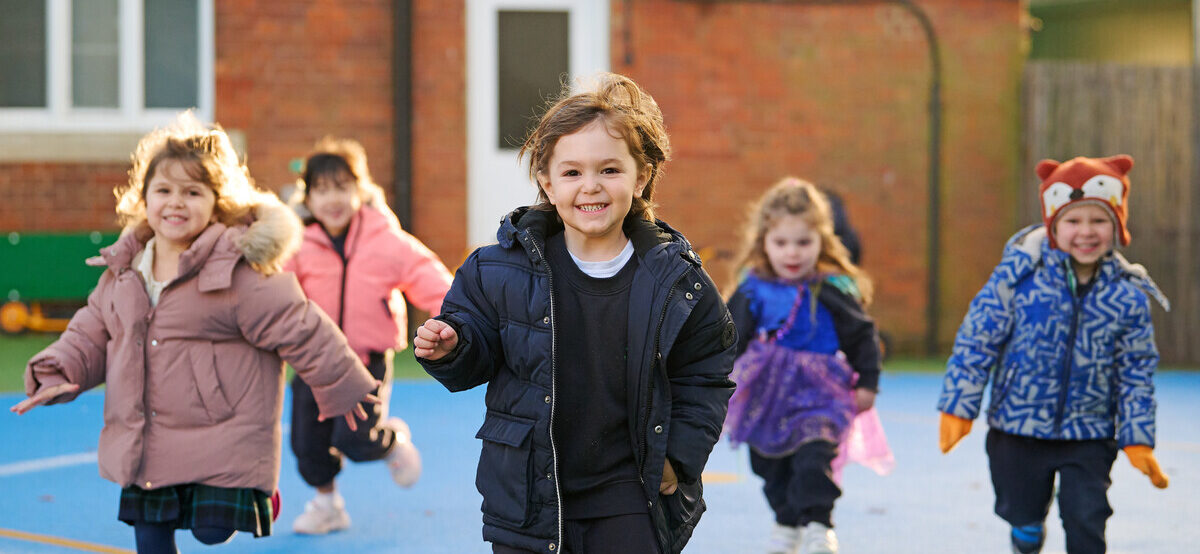Celebrating Festivals Week 2017
14th December 17

Last week, we celebrated some of the different festivals that occur across world religions during this time of the year. Firstly, Reception and Year 1 and 2 started by looking back to October and the Hindu festival of Diwali, which is a very important holiday in India. It is a Hindu ‘festival of lights’ which celebrates the New Year and the word Diwali means ‘row of lighted lamps’. The girls made their own paper lanterns to decorate the school with light.
Then, we learned all the festival of Chanukah and the different traditions celebrated by Jewish people during this time. Chanukah is the Jewish festival of light and means rededication, dating back 200 years before Christianity. We discovered how it celebrates one of the greatest miracles in Jewish history, when a lamp lit in the temple with only enough all to stay lit for one day, miraculously it stayed alight for eight days. To remember this miracle, a menorah or chanukiah is lit by Jewish people, with one candle lit for each day of the festival. We used our hands to create painted images showing the Menorah and its 9 candles, 8 for each night celebrated with a tall Shamos candle used to light in the middle. Take a look below at some we made.
Year 3 and Year 4 discovered that December also marks an important time for many Buddhists – people who follow the teachings of a man who became known as the Buddha. They learned all about how Buddha achieved enlightenment, understanding what causes unhappiness and how to stop it, whilst under a Bodhi tree. He taught his followers using a story about a dog tied to a tree. They learned how we are like a dog tied in lots of knots when we worry about unimportant things. This event is marked on Bodhi Day.
Also at this time this year, the life of a very important prophet is celebrated by Muslims, who live all around the world. Muslims practise Islam. The prophet’s name is Muhammad and the festival of Mawlid Al-Nabi marks his birth. In celebration, Year 3 and 4 explored various traditions in Islamic art such as geometric patterns, vegetal patterns and calligraphy. They were able to identify and discuss different forms and create their own early Islamic style geometric patterns.



